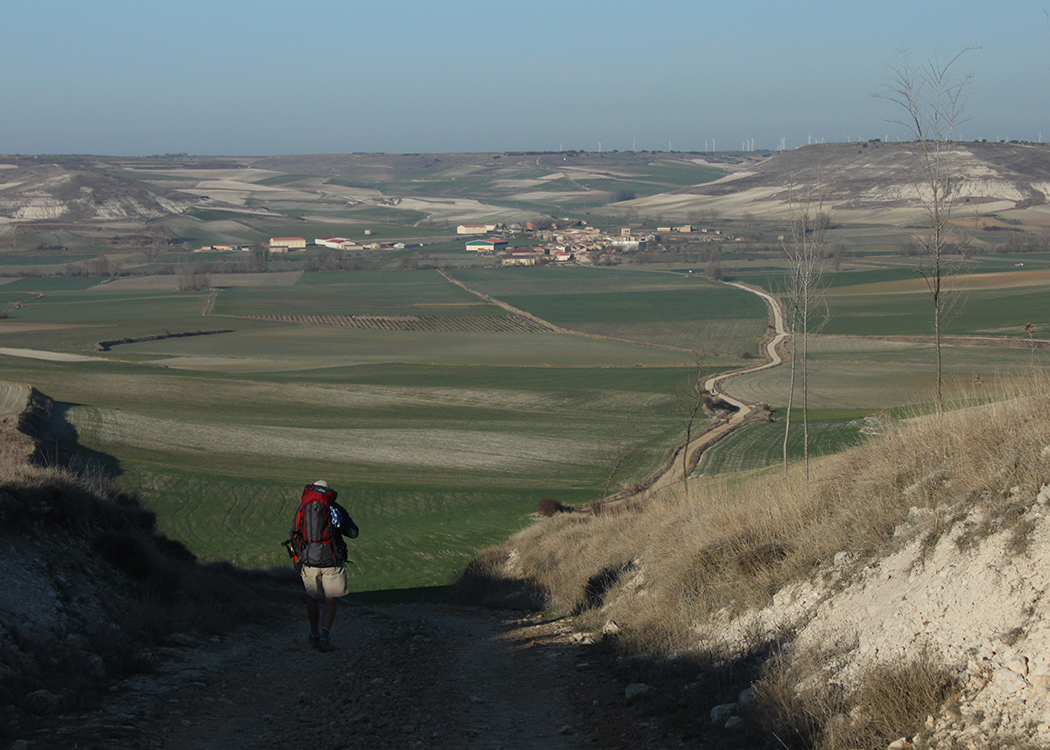 Previous Day |
Rabe de las Calzadas → Castrojeríz 28.5 km (17.7 mi) |
 Next Day |
¡Buenas tardes, todos!
Last night was another miraculous night! Apart from the funny tingling sensation I felt when my feet first hit the floor, all of my pains from yesterday have melted away! Of course, I wanted to take it easy today and started out pretty late: 8:00! Today’s goal was to get to Castrojeríz, or as I like to call it, Cake Town!
I started out with Lee, who is quite the world traveler! For the last three months, she has been traveling from (in order) Los Angeles, to Zion National Park, to Bryce Canyon National Park, to Fresno, to San Francisco, to Washington, D.C., to New York, and now, Spain! Most of the time has been by bus in what she described as traditional Korean tourism: get up at 4:00, drive to a site, snap a thousand pictures in ten minutes, and move on to the next site. That sounds intense and a great way to see lots of things in a short time, but that’s so much sitting! She embarked on this amazing adventure after 14 years of working her tail off (sure enough, she didn’t have a tail!), and she felt the need to get out and reconnect with her spirituality. As a rare Catholic in Korea, she’d stopped going to church because she didn’t like her priest. I suggested finding a new church, but I don’t think they’re very common over there!
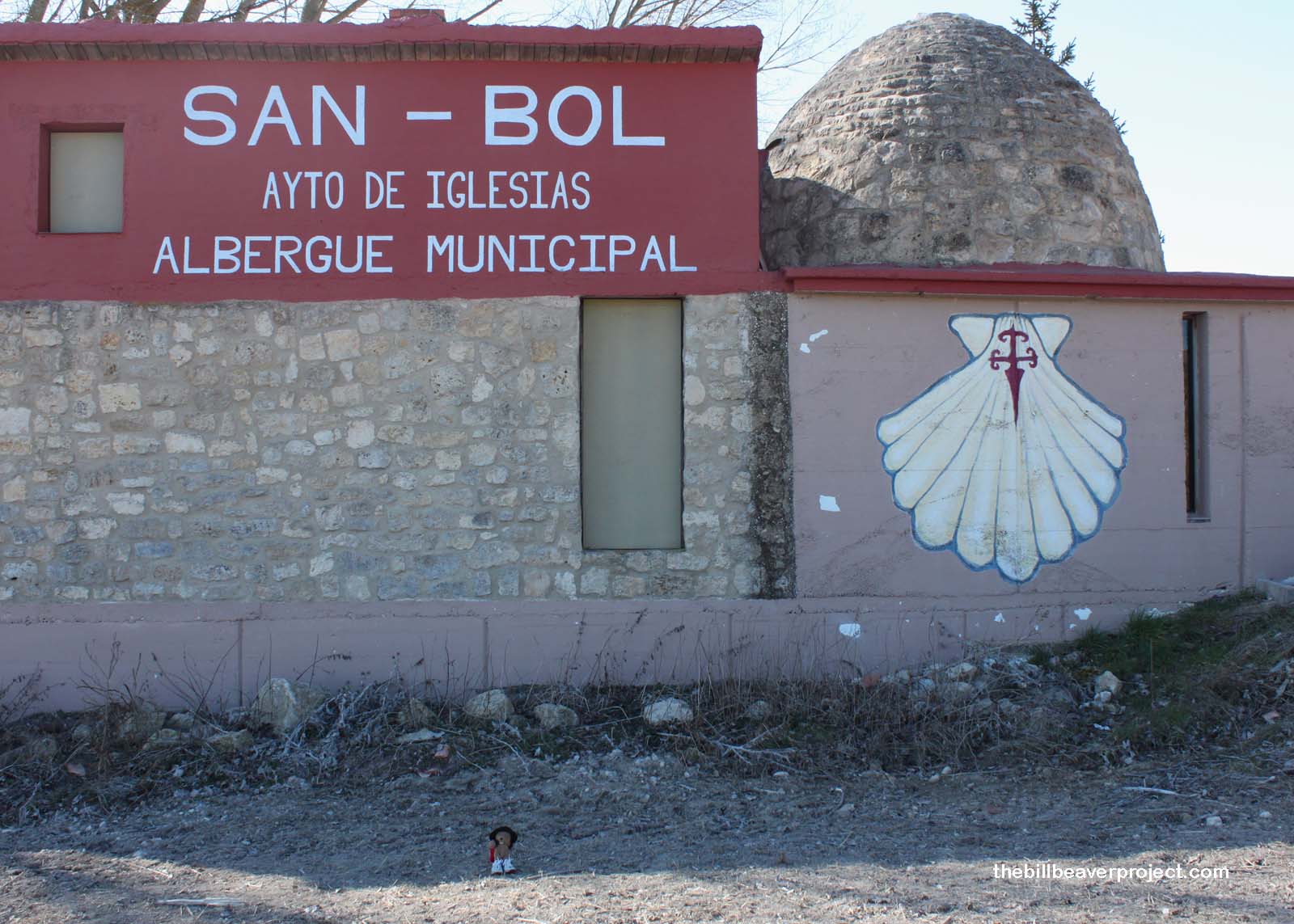 |
Lee and I split at San-Bol, home to a miraculous spring said to guard the feet of whoever bathes in it for the rest of the Camino. Considering how much my feet hurt yesterday, I had to see for myself! Plus, it was a hot day, and I needed some swim time! The spring is about 100 meters off the Camino, set in a charming picnic area with the tallest trees for miles. It used to be the home of the Convent of San Baudilio, but as of the early 16th century, it turned into another peregrino hospital, now ruined! Now, the only structure here is the albergue, which was closed!
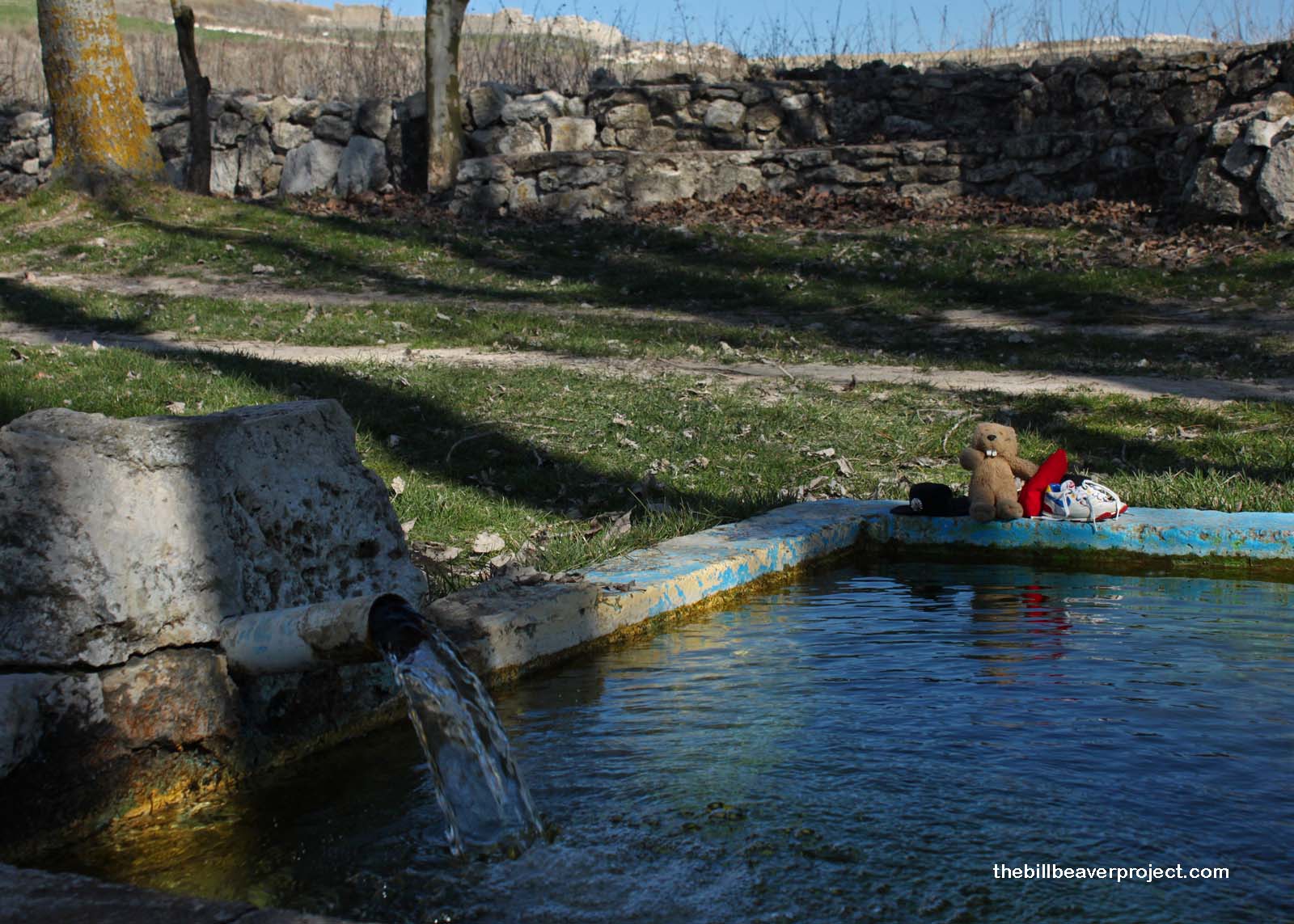 |
The spring is like a miniature pond: though a fountain keeps it circulating, there is a garden of algae at the bottom. In short, I would not recommend drinking from it, but boy, oh boy, did it ever feel nice to take a dip! Of course, it may be a bit cold for the average peregrino, but who knows? I’ve heard of humans taking swims in waters no sane beaver would ever attempt! I have to say, though, that after I got back out of the water, shook myself off, and reapplied the Vaseline to my feet, I felt pretty darn swell, so much so that I charged onward to Hontana!
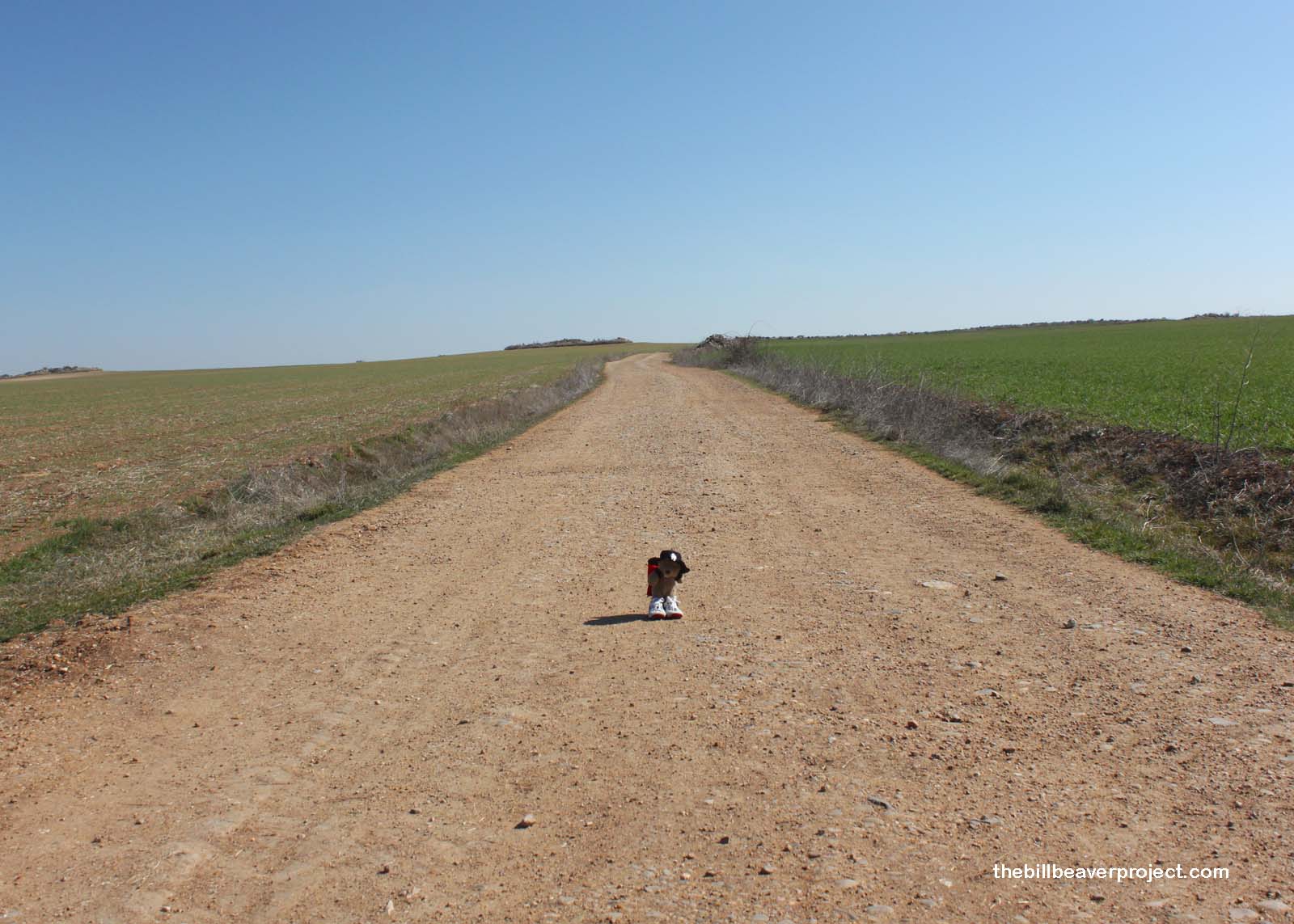 |
That energy boost didn’t last long. The next stretch was long, flat, and empty. I mean, just look at the picture! There were no trees or buildings! There was an occasional rock wall to add a little variety and a passing truck driver did honk at me, but otherwise, I’d seen more life in Death Valley! Welcome to the Meseta! The Meseta, or “Tabletop,” is a stretch of emptiness between Burgos and Astorga that’s mostly used for farmland and toying with the mind of peregrinos! For instance, all the towns are hidden in depressions, so they’re invisible for most of the day!
That was the case with Hontanas, inside what was basically a giant pothole! As soon as I started downhill, the first thing that came to my mind was “Zumo de Piña… Zumo de Piña…” A cold zumo de piña (pineapple juice) is just about the best thing in the world on a hot day! I pulled up a chair in the shade outside the bar with Lee and Jean and was, for about half an hour, in Heaven. Try it some time!
Then the empty glass cast me from Paradise, and I joined Jean for the last 9K, which led us under the arches of the Monastery of San Antón. Founded in 1146 AD (12th century!), the monastery was originally the palace and garden for Pedro I of Castilla but was appropriated by the Order of San Antonio to serve as a center for treating ergotism, or St. Anthony’s Fire. The disease had nothing to do with St. Anthony directly, but his Order specialized in treating the disease, a very difficult task since the cause was unknown until 1670!
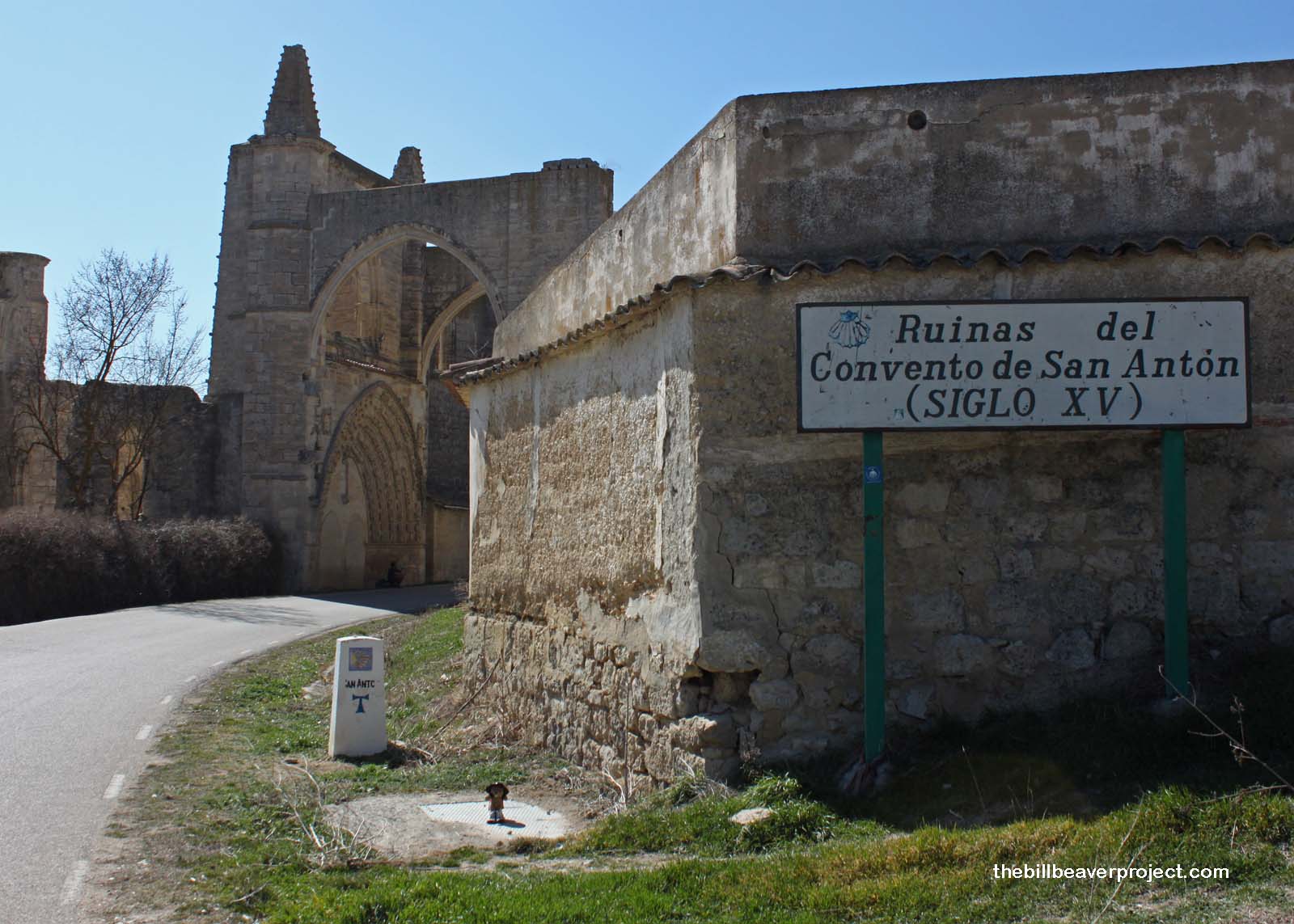 |
Though the monastery has since fallen to ruin and the Order dissolved, a small albergue still welcomes peregrinos into the old walls. As Jean and I took a shade break, Lee caught up and told us it was a tradition to make a wish under the monastery’s arches. I wished that my fate would be better than the monastery’s, but more than that, on account of Jean’s bad knees and blisters, and Lee’s aching ankle, I wished for everyone’s safe and triumphant arrival in Santiago!
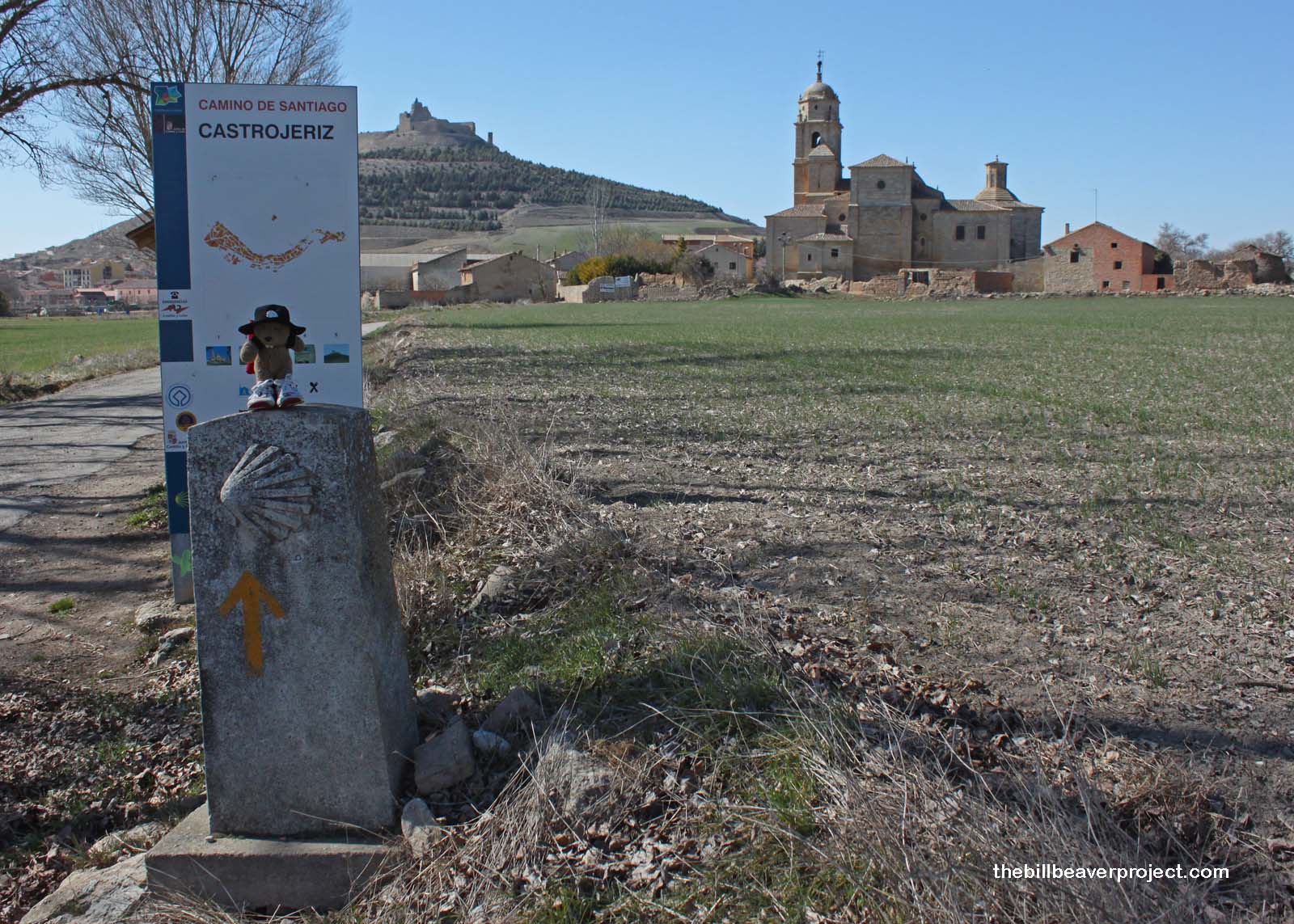 |
It was a hot stretch along the tree-lined road to Castrojeríz, but when we arrived, it was marvelous to see the city built in layers around a hill, just like a fancy cake! While no one knows exactly who founded Castrojeríz, there’s evidence that it has been populated since the Bronze Age! The Romans turned it into an agrarian community, and it was later inhabited by the Visigoths and the Moors, reconquered and rebuilt by several generations of Alfonsos! Now, the town is a collection of architecturally diverse churches and museums!
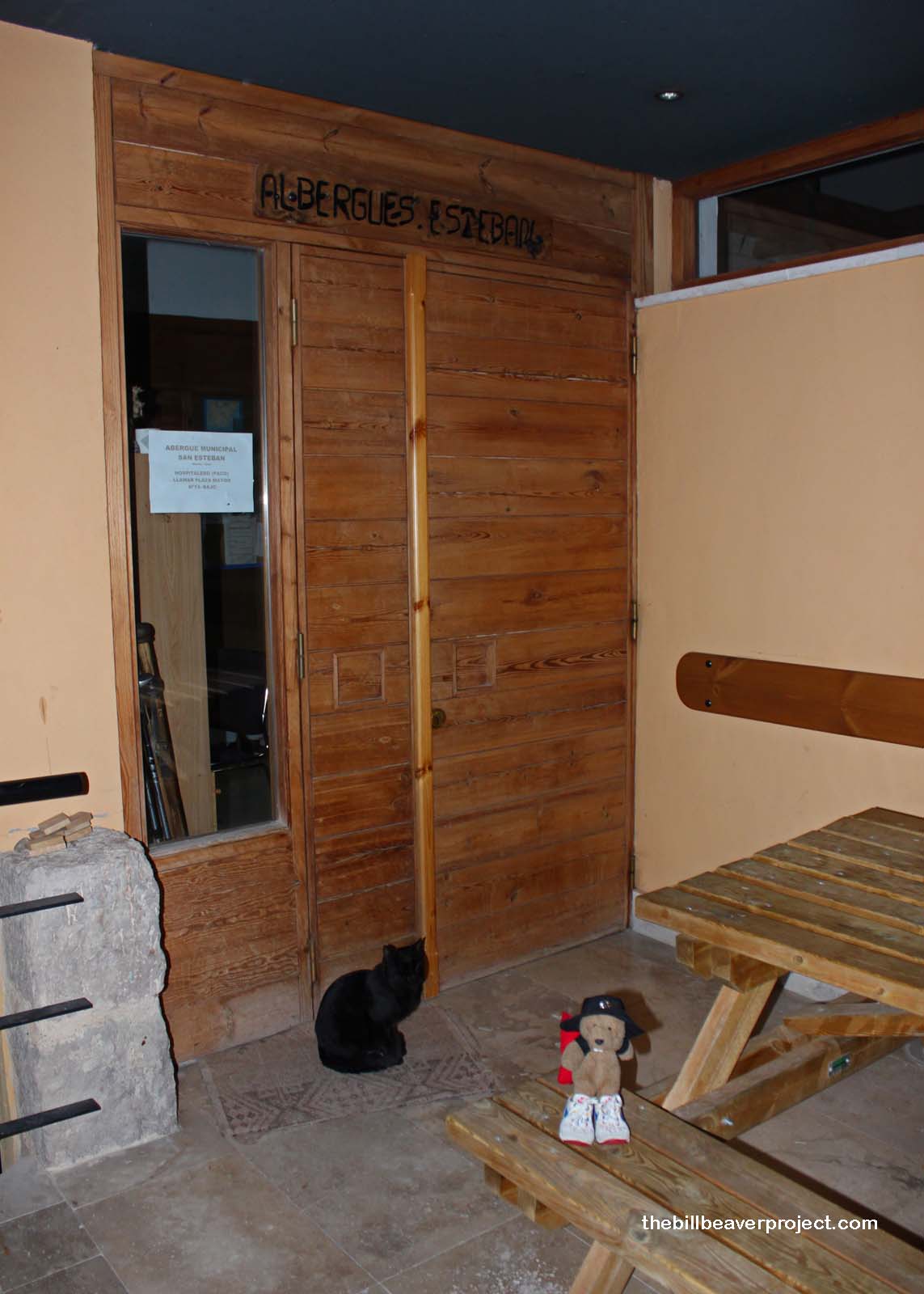 |
Only one of the two albergues was open, so we had to hunt around for the albergue of San Esteban, built into an old church and now dedicated to its two former hospitaleros, José Manzano and Julián Campo, who died in a train crash on August 21, 2006 on their way back from Santiago. They had left a note on the notice board with the Ten Commandments of the Camino. I didn’t write all of them down, but number one was “The Camino is not a marathon.”
I had to think about this over dinner as Serge and Didier put together a meal of microwave pizzas and salad. They will not be continuing our pace tomorrow, and who knows whether we will see each other again. Perhaps they have it right. If I keep up with Jean and Andrew, I will arrive at the end several days early, and then what will I do? What will I miss? What if George is there on the day I’d planned to be there and I miss him? It’s a tough decision, but one I can’t make tonight. We’ll see tomorrow!
Buen Camino!

 Previous Day |
Total Distance Walked: 325.5 km (195.9 mi) |
 Next Day |
